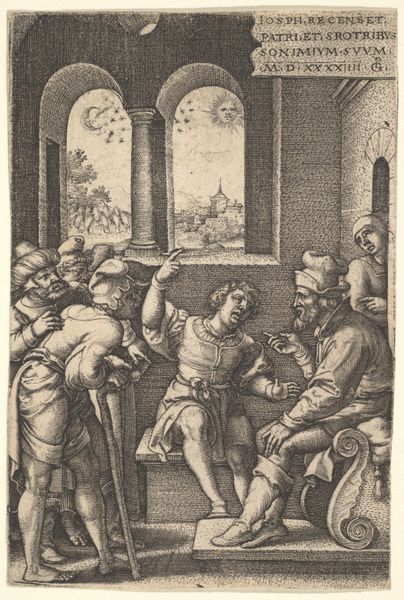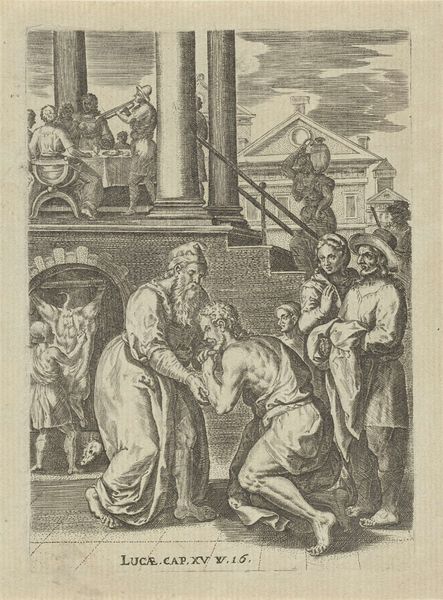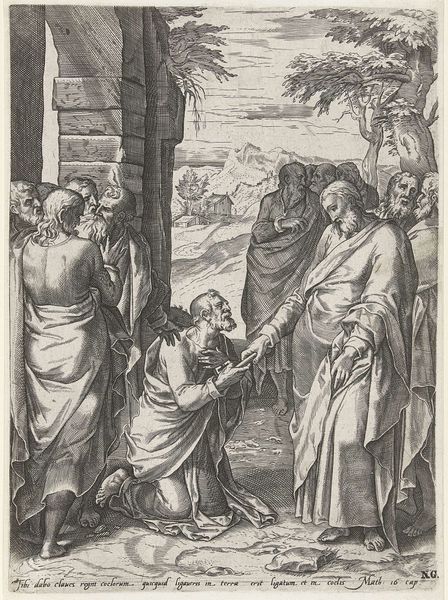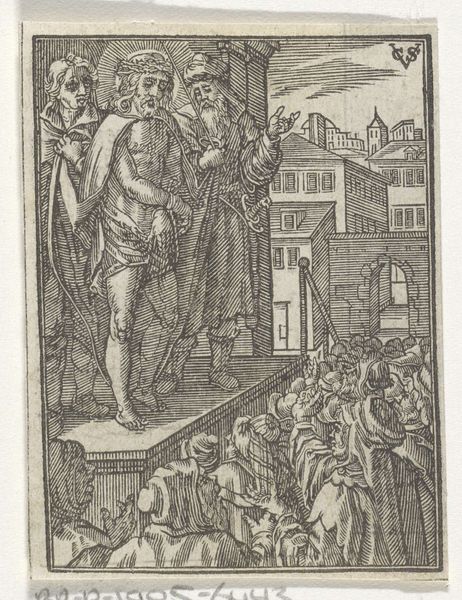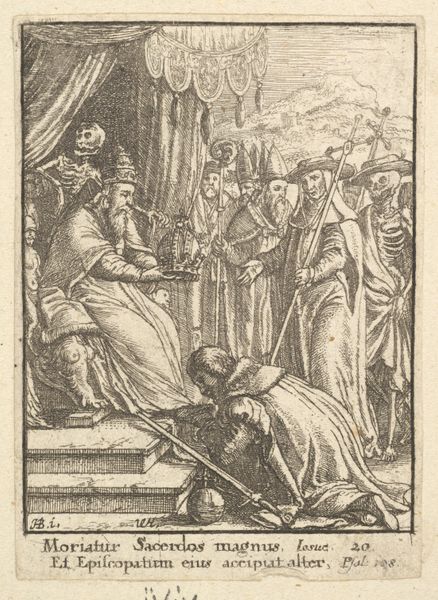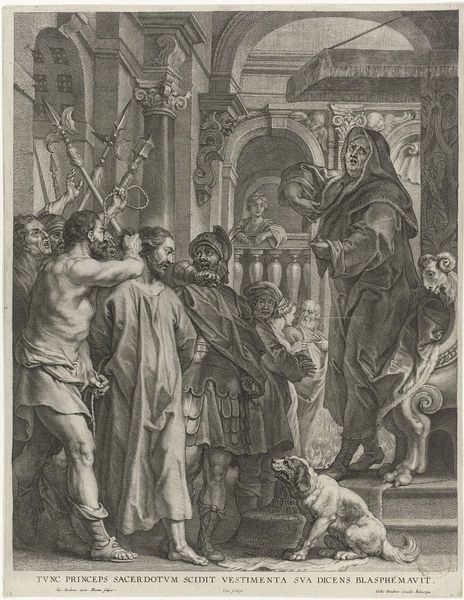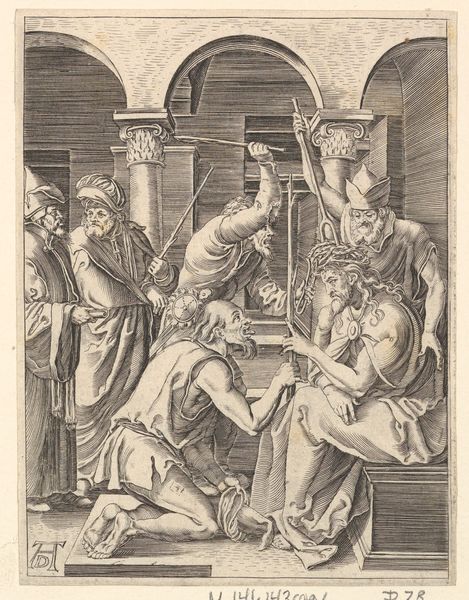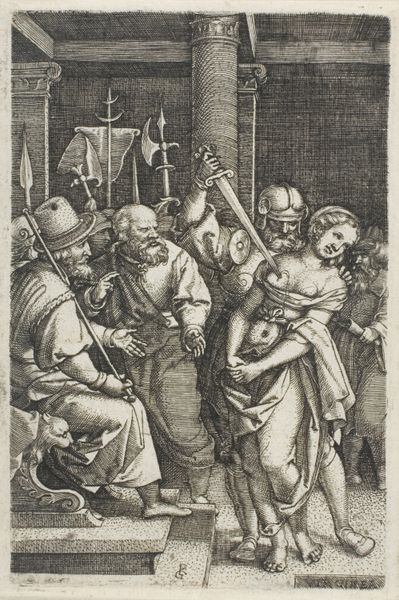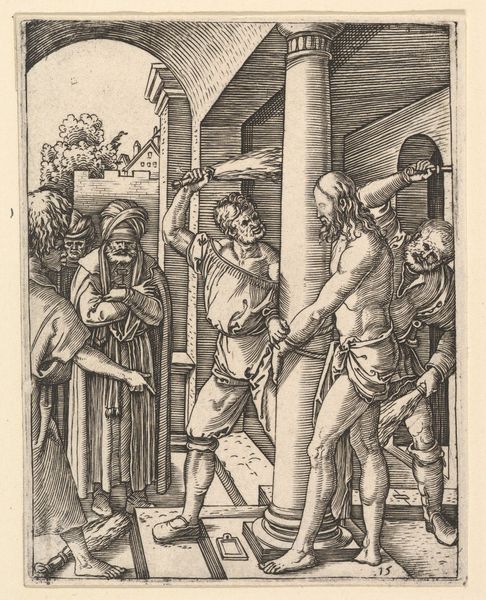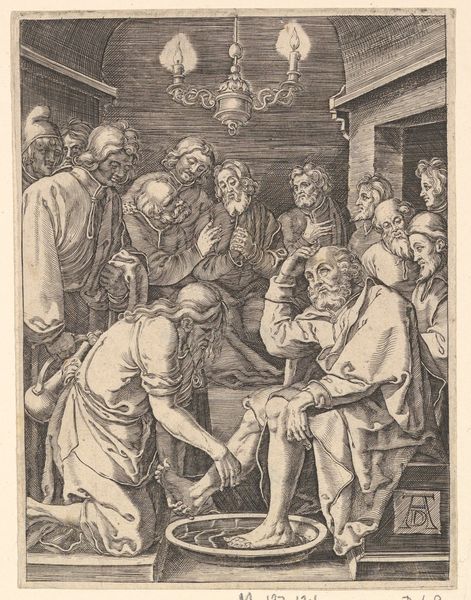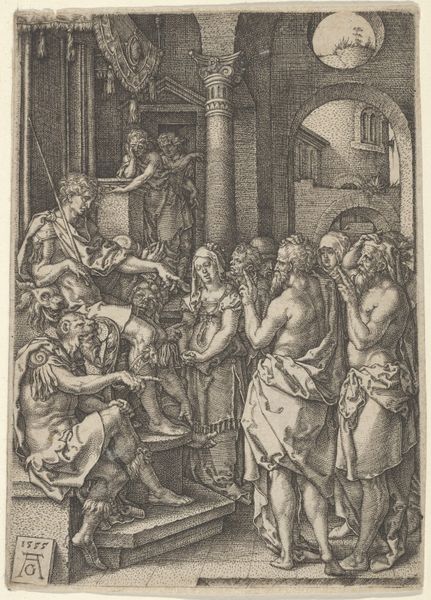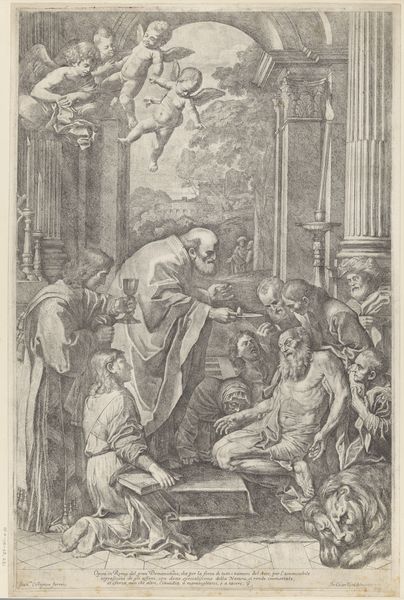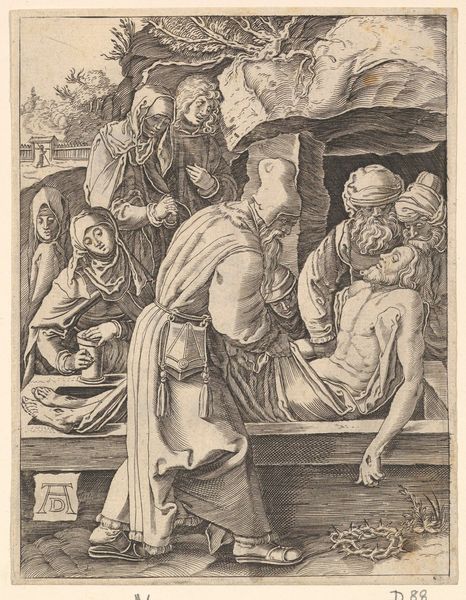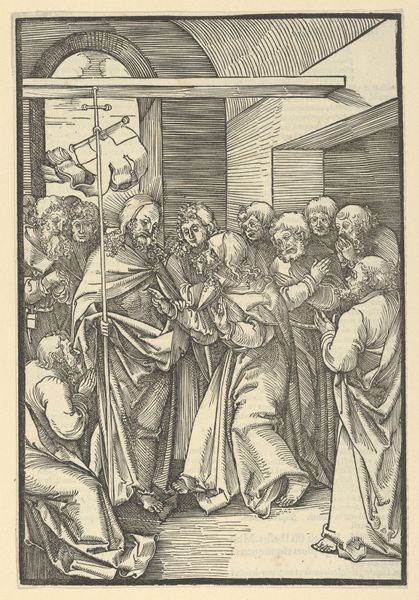
print, engraving
# print
#
figuration
#
11_renaissance
#
men
#
history-painting
#
engraving
#
christ
Dimensions: For the whole series: plate circa : 5 x 3 13/16 in. (12.7 x 9.7 cm)
Copyright: Public Domain
Editor: This engraving, “Engraved copies of The Little Passion,” dating from 1485 to 1699, is currently held at The Met. It appears to depict Christ's flagellation, but the composition seems unusually crowded. What specific symbolic elements or traditional iconography do you see at play here? Curator: Indeed, the piece resonates with the collective memory of the Passion, a central narrative within Christianity. Observe the pillar—often, it’s not merely a structural element, but a phallic symbol of Roman authority and oppression. It transforms the purely physical act of beating into a degradation of a higher spiritual power. Editor: That's a fascinating take on the pillar itself, something I hadn't considered! How does the crowd contribute to that overall message? Curator: Note their exaggerated gestures and expressions, pointing fingers—typical Renaissance stagecraft! It reinforces the theme of public shaming and rejection. Even today, this readily conjures related ideas. Think about the psychology of mob mentality. Editor: So the symbols speak to our understanding, even across cultures and time periods? Curator: Exactly. Consider the cultural memory carried through these archetypes. How many ways have crowds behaved in art since? What about whips and flogging? Do they only convey the suffering of Christ, or does our modern mind leap to allusions of exploitation or slavery, too? Dürer isn't simply retelling a story; he is tapping into primal human responses. Editor: That's incredibly insightful. I hadn't realized the depth of symbolism layered within such a familiar scene. I guess engravings really can transcend time. Curator: Indeed, that's why these symbols are potent because they aren't trapped within a specific era. The best symbols find relevance time and again.
Comments
No comments
Be the first to comment and join the conversation on the ultimate creative platform.
